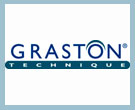Ten million or more sports injuries are treated in the United States each year. Many musculoskeletal injuries can benefit from the application of sports medicine, even though they may have different causes. The resulting injuries in many cases are similar even though the activity that created them is different. Carrying a suitcase, for instance, can cause tennis elbow as well as turning a screw, or opening a sticky door. Similarly, an injury such as runner’s knee is sometimes the result of excessive inward rolling of the foot (pronation) while walking.
How do Sports Injuries develop?
There are many reasons sports injuries occur, including faulty training methods, imbalanced stress on certain parts of the body that results from structural abnormalities, and weakness of the tendons, muscles and ligaments. Chronic wear and tear, which results from a repetitive motion stressing susceptible tissue leads to many of these injuries. Pain occurs when a small number of muscle or tendon fibers start to tear. Powerful pressure, greater than the inherent strength of the muscles, tendons, and ligaments will often tear them. After a sprain, joints are more prone to injury, especially when the muscles and ligaments that support them are weak. Faulty training methods, however, is the most common cause of muscle and joint injuries. The individual often doesn’t allow for an adequate post-workout recovery time or continues to exercise or play the sport even when pain has developed.
What are some common Sports Injuries?
- Muscle sprains and strains
- Lower back pain
- Bruises
- Torn ligaments that hold joints together
- Torn tendons that support joints
- Dislocated joints
- Fractured bones, including vertebrae
Conventional medical treatments may help relieve the symptoms of sports injuries, but they do not address the root of the problem. By strengthening structural weaknesses in the body, as natural treatments like Chiropractic do, pain associated with sports injuries may be alleviated permanently.
Natural vs. Modern Medicine’s Approach to Sports Injuries
Modern Medicine’s Approach to Sports Injuries
The customary immediate treatment for most sports injuries is RICE, which refers to treating soft tissue injury with Rest, Ice, Compression and Elevation. This treatment approach decreases inflammation at a time when the injured area needs it most, resulting, unfortunately, in decreased healing of the injury. Anything that decreases the metabolic rate or blood supply to soft tissues, such as rest, immobilization and ice, will further promote the decline of that tissue, and profoundly delay its healing. In other words, RICE treatment does nothing to repair the injured and weakened ligaments or tendons and, thus, does not alleviate the chronic pain that people who have suffered sports injuries experience, not to mention the fact that they may be prevented from continuing their sports for extended periods of time, or even permanently.
Another standard practice of modern medicine is to inject steroids into the injured area or to prescribe anti-inflammatory medications. However, in the long run, these treatments do more damage than good. Although cortisone shots and anti-inflammatory drugs have been shown to produce short-term pain benefit for soft tissue sports injuries, both result in long-term loss of function and even more chronic pain by actually inhibiting the healing process of soft tissues and accelerating cartilage degeneration. Plus, long-term use of these drugs can lead to other sources of chronic pain, allergies and leaky gut syndrome.
When all else fails, individuals with chronic pain from sports injuries that fail to heal are usually referred to a surgeon. Unfortunately, surgery often makes the problem worse. In fact, surgery, which usually involves removing damaged tissue, actually weakens the area. Removing cartilage, ligament or any other soft tissue of the body will make that body part weaker. In addition, surgeons use x-ray technology as a diagnostic tool, which does not always properly diagnose the pain source. And finally, removing cartilage tissue will most commonly result in arthritis. As a result of these standard modern medical treatments, many soft tissue sports injuries do not heal completely and are often easily re-injured.
The Natural Approach to Sports Injuries
Although rest, ice, compression and elevation may provide temporary relief, they do not aid the healing process of a painful sports injury. This is one of the major differences between traditional sports medicine and the natural medicine approach, including INFLAMYAR. A much better immediate approach to a sports injury is a treatment known as MEAT — Movement, Exercise, Analgesics and Treatment. Movement increases joint nutrition, exercise increases blood flow, analgesics increase pain control and treatment completes the healing. Specific treatments that aid in the healing process include ultrasound, heat and massage because they increase blood flow.
Pain relief should never be the ultimate goal of sports injury treatment, but rather repairing injured and weakened tissue. Ibuprofen, aspirin, cortisone shots and surgery may relieve the pain, but they do not strengthen the weakened tissue as a Chiropractic adjustment does. Chiropractic stimulates the healing process and therefore decreases the length of time it takes for soft tissue sports injuries to heal. As a result, athletes can not only return to their game and/or sport, but often the particular area that was injured will be stronger than before the injury and performance will be enhanced.
If you are interested in more information about natural treatments or to schedule an appointment, please contact Dr. Laboret at 972-671-5263.
Disclaimer: The preceding is to provide information about relief and the benefits that may be derived. It is not intended to claim a cure for any disease or condition. It should not take the place of your doctor’s advice or treatment.






